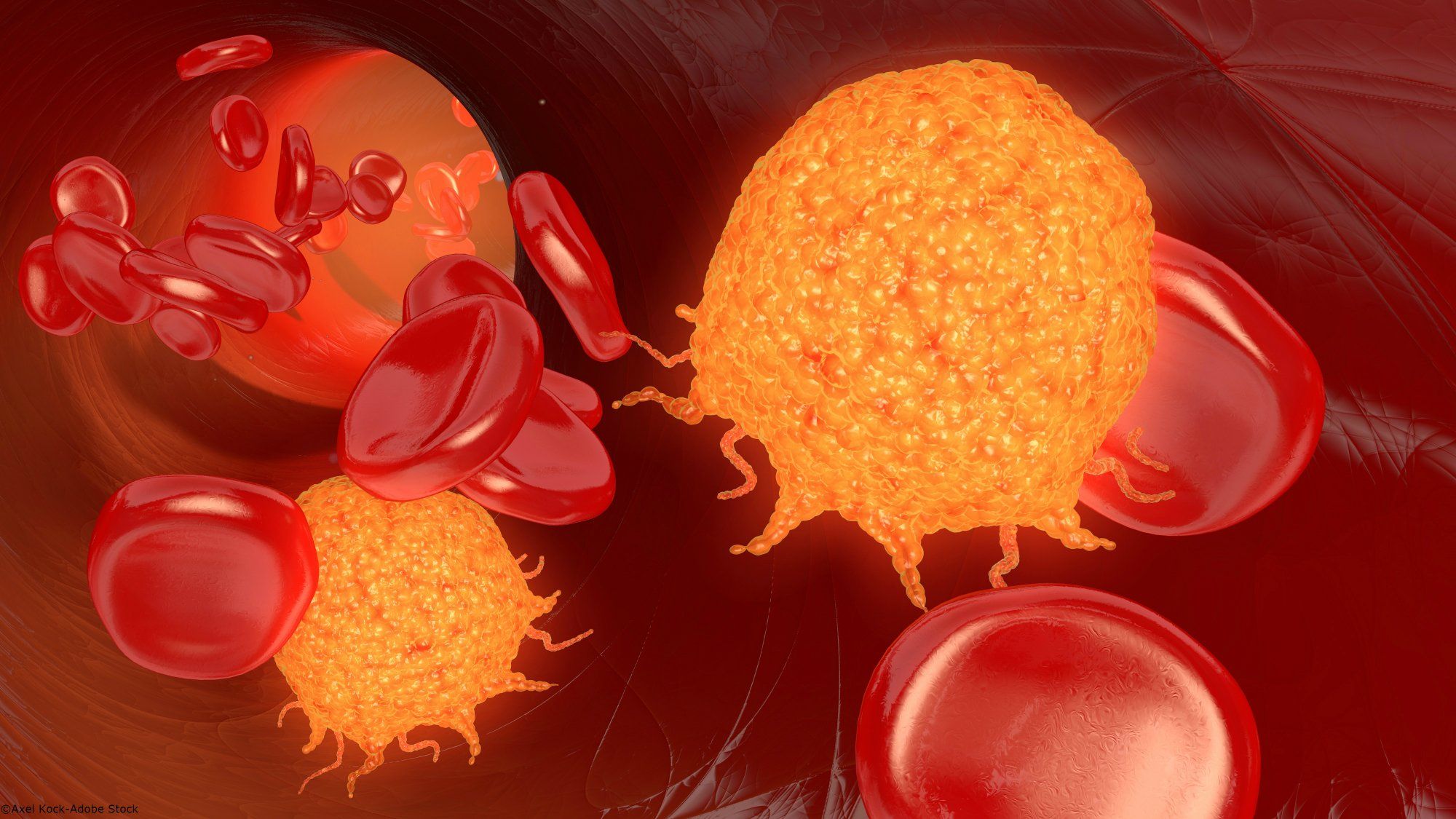Non-Relapse Mortality Rates in B-ALL and MCL Consistent With Lymphodepletion/Brexu-Cel Treatment
For patients with acute lymphoblastic leukemia and mantle cell leukemia, lymphodepletion then brexu-cel show positive efficacy and safety outcomes.
For patients with acute lymphoblastic leukemia and mantle cell leukemia, lymphodepletion then brexu-cel show positive efficacy and safety outcomes.

Data from a retrospective study shared at the 2024 American Society of Hematology Annual Meeting & Exposition (ASH) showed positive safety and efficacy data, particularly regarding non-relapse mortality, from a treatment of outpatient administration of lymphodepletion then brexucabtagene autoleucel (brexu-cel; Tecartus) compared with inpatient administration of lymphodepletion, for patients with B-cell acute lymphoblastic leukemia (B-ALL) and mantle cell lymphoma (MCL).
Findings showed that patients administered lymphodepletion in the outpatient setting (n = 28)—irrespective of the setting for brexu-cel infusion—experienced a 60-day non-relapse mortality rate of 3.6% (95% CI, 0.25%-16%) vs 7.1% (95% CI, 1.2%-21%) for those given lymphodepletion and brexu-cel in the inpatient setting (n = 28). The 6-month progression-free survival (PFS) rate was 83.3% (95% CI, 60.5%-93.5%) for the outpatient arm vs 71.1% (95% CI, 50.8%-87.6%) for the inpatient arm.
“Brexu-cel is safe to administer [in the outpatient setting] with similar efficacy and non-relapse mortality,” lead study author Tamer Othman, MD, PhD, of City of Hope in Durante, California, and colleagues wrote in a poster presentation of the data. “Future studies with [a] larger sample size and longer follow-up are needed to confirm our findings.”
Investigators conducted a retrospective study of adult patients with B-ALL or MCL treated with brexu-cel at City of Hope between November 1, 2020, and March 31, 2024. Patients were divided into 2 groups. The first group included patients given lymphodepletion in the outpatient setting, irrespective of the setting of brexu-cel infusion. The second group featured patients given lymphodepletion in the inpatient setting.
Investigators also used a propensity score nearest matching method to improve the comparability of the 2 groups. Factors included in this method were ECOG performance status, severe comorbidity score, bulky disease for patients with B-ALL, and intermediate/high MCL International Prognostic Index score for those with MCL.
The rate of 60-day non-relapsed mortality served as the study’s primary end point. Secondary end points included the incidence of cytokine release syndrome (CRS) and immune effector cell–associated neurotoxicity syndrome (ICANS); inpatient admission for those given lymphodepletion in the outpatient setting; best complete response (CR) rate; and 6-month PFS rate.
In the overall population (n = 56), 66% of patients had B-ALL, and 34% had MCL. The median age was 55 years (range, 23-80), and most patients were male (77%), were Hispanic White (61%), had an ECOG performance status of 0 to 1 (93%), and had higher disease burden (75%). Patients received a median of 4 prior lines of therapy (range, 1-11); 23% of patients underwent a prior allogeneic stem cell transplant, and 7.1% received a prior autologous stem cell transplant.
In the outpatient arm, 82% of patients received brexu-cel in the outpatient setting; all patients in the inpatient arm were infused with the CAR T-cell therapy in the inpatient setting. Notably, 86% of patients in the outpatient arm were admitted to the hospital after starting lymphodepletion in the outpatient setting at a median of 8 days (range, 1-17) following the start of lymphodepletion. Reasons for admission included brexu-cel–related toxicities such as fever due to CRS (71%), hypotension due to poor oral intake (4.2%), and dyspnea (4.2%); other reasons for admission included high-burden disease (13%), fever during lymphodepletion due to leukemia (4.2%), and pain control during lymphodepletion (4.2%). The median time hospitalized during the first 100 days from the start of lymphodepletion was 10 days (range, 0-52) in the outpatient arm vs 27 days (range, 13-47) in the inpatient arm.
Additional data showed that patients with B-ALL in the outpatient arm (n = 20) achieved a CR rate of 90% (95% CI, 68%-99%) vs 88% (9%% CI, 64%-99%) in the inpatient arm (n = 17). In patients with MCL, the CR rates were 75% (95% CI, 35%-97%) in the outpatient arm (n = 8) vs 73% (95% CI, 39%-94%) in the inpatient arm (n = 11).
Safety data showed that any-grade CRS occurred in 86% of patients in the outpatient arm vs 82% of those in the inpatient arm. The rates of grade 3 or higher CRS were 7.1% and 14%, respectively. The respective median durations of CRS were 4 days (range, 1-10) and 4 days (range, 2-8). Any-grade ICANS was reported in 54% of patients in the outpatient arm vs 61% in the inpatient arm. The respective rates of grade 3 or higher ICANS were 29% and 25%. The median duration of ICANS was 4 days (range, 1-41) in the outpatient arm vs 7 days (range, 1-73) in the inpatient arm. Tocilizumab (Actemra) was given for toxicity to 79% of patients in the outpatient arm vs 75% of patients in the inpatient arm; the median number of tocilizumab doses was 2 (range, 1-4) in both arms.
Steroids were given for toxicity to 79% of patients in the outpatient arm vs 71% of patients in the inpatient arm; the rates of prophylactic dexamethasone administration were 32% and 25%, respectively. Prophylactic anakinra was given to 29% of patients in the outpatient group vs 7.1% of those in the inpatient group. Treatment anakinra was given to 25% and 18% of patients, respectively.
Reference
Othman T, Baird JH, Wang Y, et al. Outpatient administration of brexucabtagene autoleucel (brexu-cel) for acute lymphoblastic leukemia (ALL) and mantle cell lymphoma (MCL) is safe and feasible. Blood. 2024;144(suppl 1):2278. doi:10.1182/blood-2024-207085